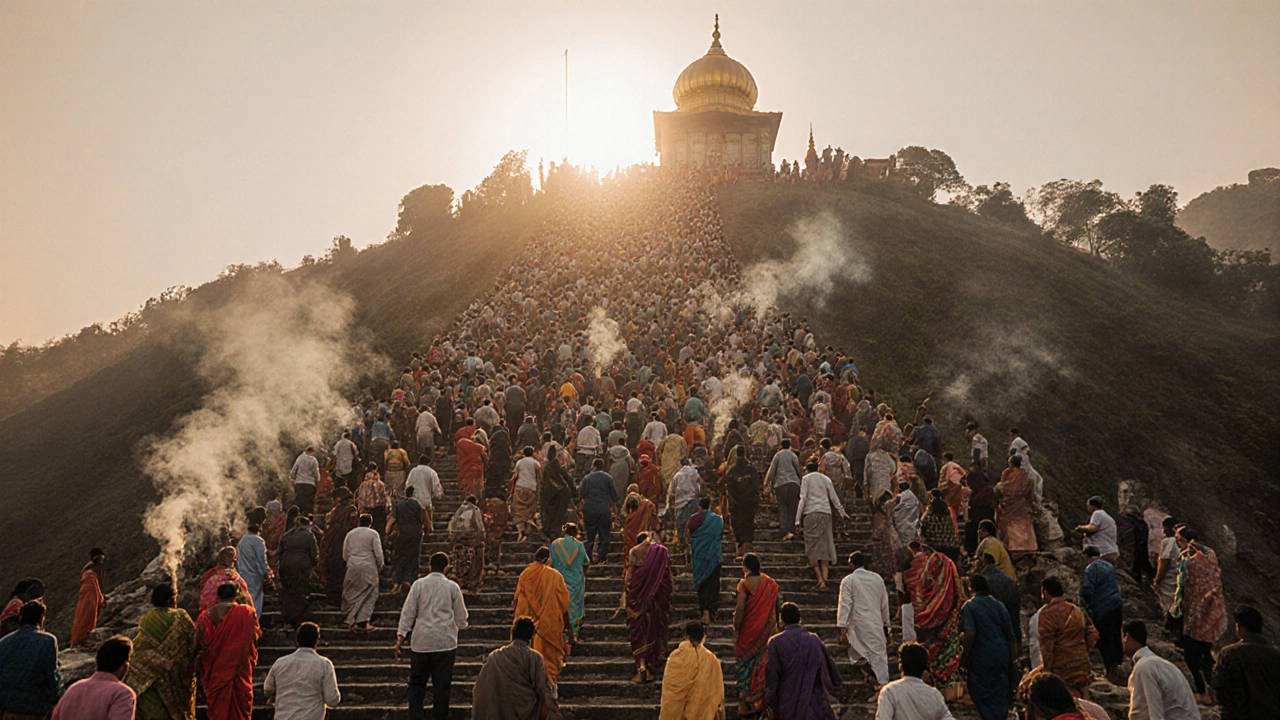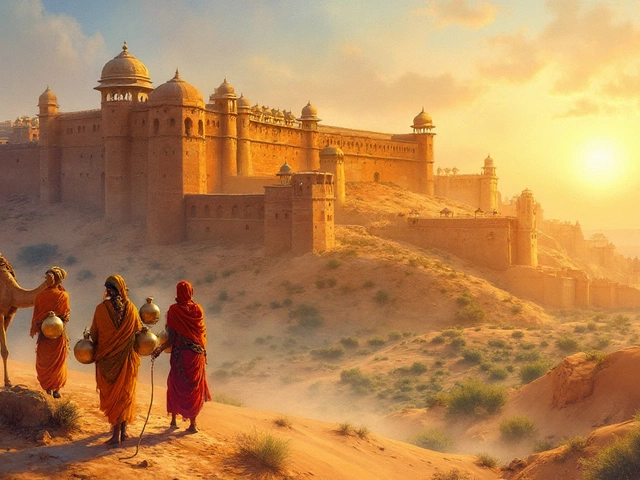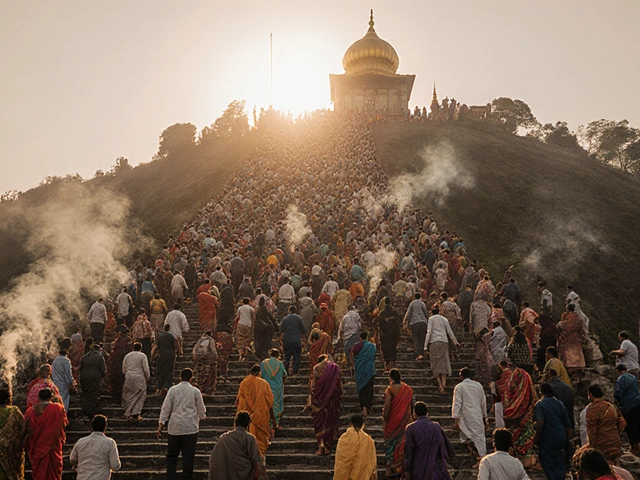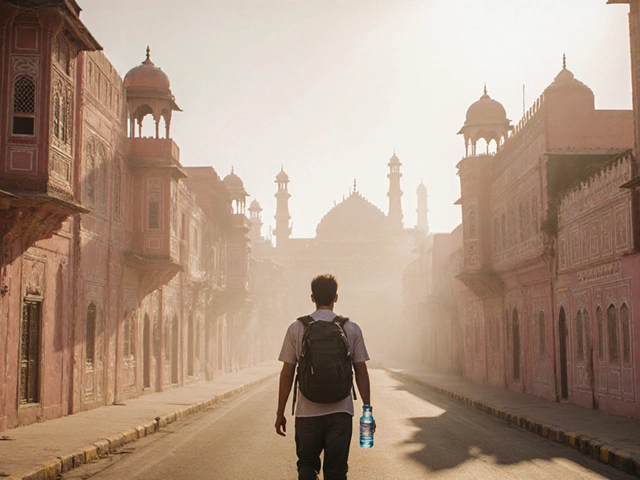Tirupati Visitor Experience Calculator
Plan Your Visit
Your Visit Experience
Visitor Tip
For the best experience, visit early morning (3 AM) on weekdays during non-festival periods. Bring water, wear comfortable shoes, and use the TTD e-Seva portal for booking.
The Tirumala Venkateswara Temple in Tirupati, Andhra Pradesh, is the most visited temple in India-and the world. Every year, over 50 million pilgrims make the journey to this hilltop shrine, many walking barefoot up the 3,500 steps of the Seshadri Hills just to catch a glimpse of Lord Venkateswara. That’s more visitors than the Eiffel Tower, the Vatican, and the Great Wall of China combined. It’s not just a place of worship; it’s a cultural phenomenon that shapes travel patterns, local economies, and daily life across South India.
Why Do So Many People Visit Tirupati?
The answer lies in belief, not just history. Devotees come seeking blessings for prosperity, health, and relief from hardship. The deity, Lord Venkateswara, is believed to be an incarnation of Vishnu who took this form to help humanity during the Kali Yuga-the current age of moral decline. Many believe that a simple darshan, or viewing, of the deity can erase sins and bring peace.
It’s not uncommon to see families traveling for days by bus, train, or even on foot from Tamil Nadu, Karnataka, Telangana, and Odisha. Some pilgrims shave their heads as a sign of surrender, leaving bundles of hair at the temple’s hair donation center. That’s over 500 kilograms of hair collected every day-turned into wigs sold globally to fund temple operations. The temple runs one of the largest charitable networks in India, feeding more than 100,000 people daily through its annadanam program.
How the Temple Manages Mass Crowds
Handling half a million visitors on peak days requires engineering as much as faith. The temple uses a sophisticated ticketing system called TTD e-Seva, which lets pilgrims book slots online to avoid hours-long waits. There are special queues for senior citizens, disabled visitors, and those with medical needs. The temple even has its own police force, medical centers, and a dedicated fire brigade.
During festivals like Brahmotsavam, the crowd swells to over 1 million. To manage this, the temple authorities use crowd-flow sensors, CCTV monitoring, and mobile apps that send real-time updates on wait times. Pilgrims can check how long they’ll wait for darshan before even reaching the hill. This blend of tradition and tech keeps the system from collapsing under its own weight.
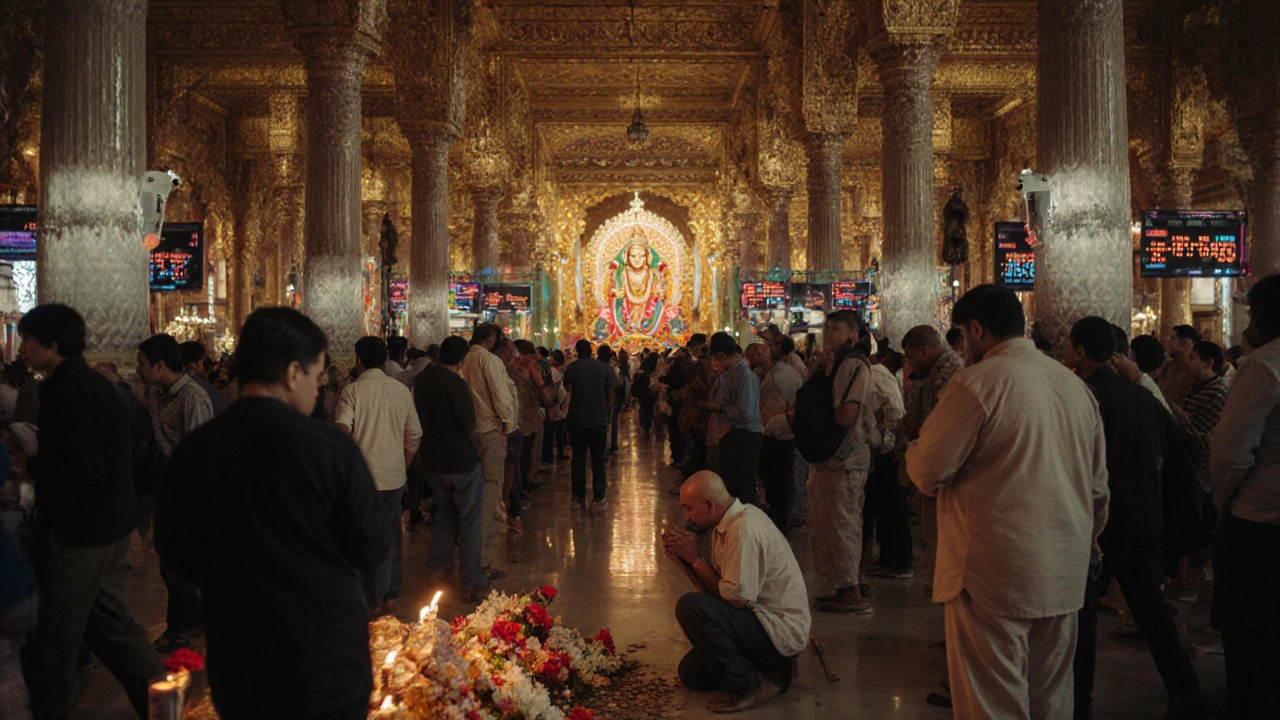
The Economics of Devotion
The Tirumala Temple is one of the richest religious institutions on Earth. Its annual income exceeds $1 billion, mostly from donations, offerings, and the sale of prasadam (blessed food). Gold, jewels, and cash are offered daily-some devotees give entire properties. The temple’s wealth isn’t hoarded; it’s reinvested into education, healthcare, and rural development. It runs over 200 schools, three hospitals, and provides free meals to millions yearly.
Even the temple’s infrastructure is funded by devotion. The famous golden dome was covered in 2,000 kilograms of gold donated by devotees. The temple’s treasury holds over 10,000 kilograms of gold and 200,000 kilograms of silver. Yet, there’s no public accounting-only a board of trustees oversees finances, mostly drawn from religious and civic leaders.
What Makes It Different From Other Major Temples?
Other temples in India draw huge crowds too. The Kashi Vishwanath Temple in Varanasi sees 10-15 million visitors annually. The Jagannath Temple in Puri gets around 8 million. But none match Tirupati’s consistency. Why?
First, it’s accessible. Unlike Kedarnath or Amarnath, which require treks or are only open a few months a year, Tirupati is open 365 days and reachable by plane, train, or highway. Second, the belief system is simple: if you come with faith, you’ll be blessed. No complex rituals are required. Third, the temple’s reputation has been amplified over centuries through oral tradition, songs, and regional media.
Compare this to the Meenakshi Temple in Madurai, which is architecturally stunning but draws fewer visitors because it’s more of a cultural site than a pilgrimage destination. Or the Vaishno Devi shrine in Jammu, which requires a 12-kilometer trek and is limited by weather. Tirupati works because it removes barriers-physical, financial, and spiritual.
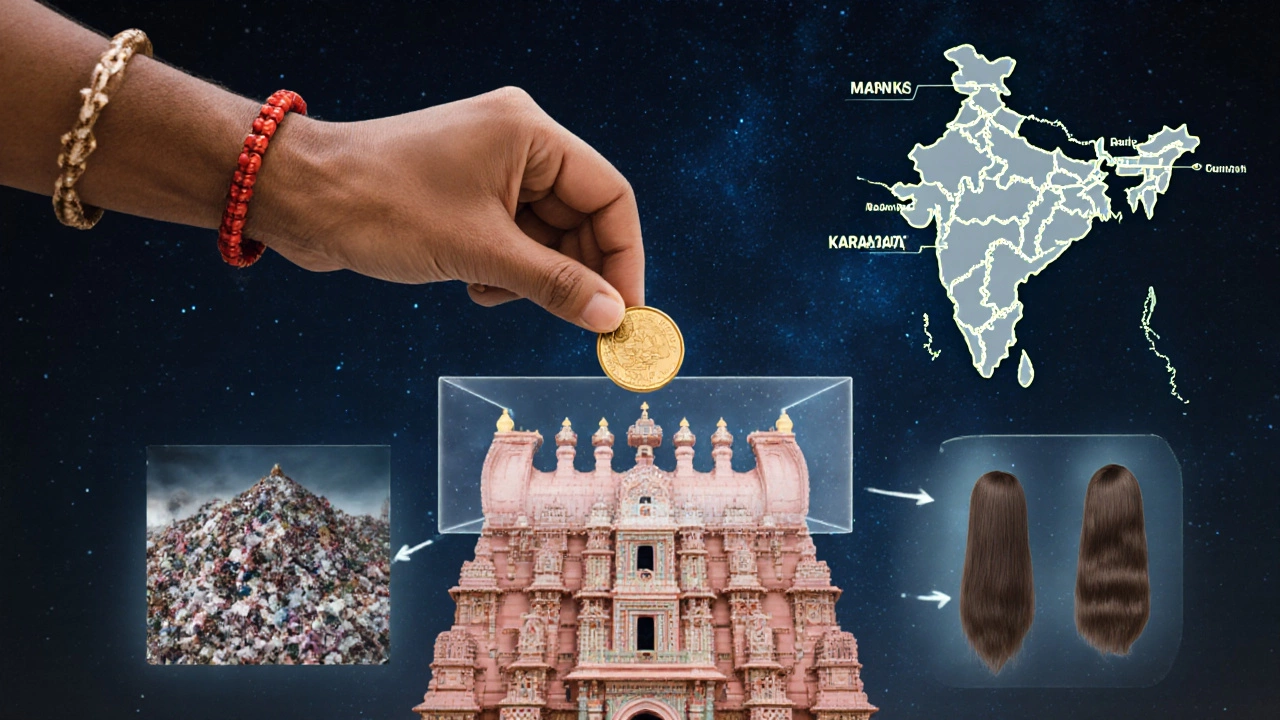
What to Expect When You Go
If you’re planning a visit, here’s what you need to know:
- Book your darshan slot online through the TTD e-Seva portal-it’s the only way to avoid waiting 10+ hours.
- Arrive early. Even with a ticket, lines can be long. The temple opens at 3 AM.
- Wear modest clothing. Shorts, sleeveless tops, and sandals are not allowed inside the inner sanctum.
- Bring minimal belongings. Lockers are available, but it’s easier to travel light.
- Try the prasadam-laddu is famous, but the rice-based offerings are just as meaningful.
- Stay in one of the temple’s guesthouses. They’re clean, affordable, and located within walking distance.
Don’t expect silence or solitude. This isn’t a quiet meditation space. It’s a living, breathing, chanting, singing, drumming mass of devotion. The air smells of incense and jasmine. The sound of bells and chants never stops. It’s overwhelming-but for many, that’s exactly the point.
Is It Worth It?
Yes-if you’re open to the experience. This isn’t a museum or a historical site. It’s a living spiritual ecosystem. You won’t just see a temple; you’ll feel a movement. People from every caste, class, and language in India come here as equals. A billionaire in a silk dhoti stands next to a farmer in a torn shirt. Both wait the same amount of time. Both receive the same blessing.
That’s what makes Tirupati more than a temple. It’s a mirror of India itself-diverse, deeply faithful, and endlessly resilient.
Is Tirupati the most visited temple in the world?
Yes. With over 50 million annual visitors, the Tirumala Venkateswara Temple holds the record for the most visited religious site globally. It surpasses the Vatican, Mecca (during Hajj season), and the Western Wall in Jerusalem in terms of year-round footfall. Even during non-festival periods, daily visitor numbers exceed 50,000.
Do I need to be Hindu to visit Tirupati?
No. The temple welcomes people of all faiths. There are no religious tests or conversion requirements. Many non-Hindus visit out of curiosity, cultural interest, or personal spiritual seeking. However, all visitors must follow the dress code and behavioral guidelines, such as removing footwear and maintaining silence in the inner sanctum.
How long does it take to get darshan at Tirupati?
With a pre-booked online ticket, darshan typically takes 1 to 3 hours. Without a ticket, waits can stretch to 12-24 hours, especially on weekends or during festivals. The temple offers special darshan options like Sarva Darshan (free, long wait), Divya Darshan (paid, faster), and Suprabhatam Darshan (early morning, limited slots).
Can I visit Tirupati with children or elderly family members?
Yes. The temple has dedicated facilities for families, seniors, and people with disabilities. There are wheelchair-accessible paths, elevators to key areas, and special queues. The temple also offers free transport from the base town to the temple complex via electric buses. Many families bring young children as part of a spiritual tradition.
What’s the best time of year to visit Tirupati?
The best months are October to March, when the weather is cooler and drier. Avoid the monsoon season (June-September) due to slippery paths and delays. Major festivals like Brahmotsavam (in September-October) and Vaikunta Ekadasi (December-January) are spiritually powerful but extremely crowded. If you want a quieter experience, aim for mid-week in November or February.
